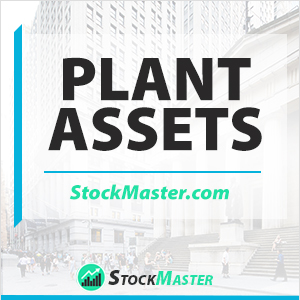 What are Plant Assets?
What are Plant Assets?
Definition: A plant asset is any type of property, mostly equipment, or any other type of asset that a company owns and uses as part of its regular or day-to-day business operations.
Plant assets are usually long-term assets or, in other words, assets that last more than a year. Some of those assets include equipment used to manufacture the product sold by a company, the building where the equipment or production processes are hosted, and even the vehicles that are used to transport manufactured goods from a production plant to a storage facility or market.
Plant Asset Examples
Plant assets come in different types. Some of the most common of them include:
- Office equipment
- Machinery
- Vehicles
- Furniture
- Fixtures
- Buildings
- Land
- Land improvements.
Each type of plant asset has a specific use from which value is derived. For example, plant equipment might be used to facilitate the manufacturing process of a product. Buildings may house the production and storage facilities as well as some of the company’s other operations while the land provides the location on which the buildings are built. Each type of plant asset has a specific use, but they are generally aimed at facilitating the company’s operations. They, therefore, fit in the description of an asset as anything that facilitates revenue generation.
How are Plant Assets recorded in Accounting?
Plant assets usually generate value for the company over a duration of more than one year. This is why they are recorded in the books of accounts as long-term assets, specifically in a company’s balance sheet. Once a piece of equipment is acquired, it is not immediately registered as an expense. Asset costs are, however, considered throughout each asset’s lifespan.
Depreciation Methods
Some plant assets lose value over their lifespan as they continue to be used. This loss of value is commonly referred to as depreciation, and it is calculated through the double-declining depreciation or straight-line depreciation methods.
Straight-line depreciation
This is where an asset is allocated a specific duration in which it is expected to provide value, also known as useful life. If a company purchases a machine for $50,000 and the machine is given a 5-year useful life, then the depreciation recorded in the expense account every year will be $10,000. This means that the machine will depreciate by $10,000 every year.
Double declining depreciation
In double depreciation, a specific depreciation rate is allocated against the current value of the machine. For instance, if the machine is purchased at $10,000 and depreciation is calculated at 5 percent, then the value of the machine after the first year will be $9,500. This means that the machine will depreciate by $500 in the first year. The depreciation in the second year will be calculated using $9,500 as the principal amount.
Some of the plant assets that depreciate over time include office equipment, vehicles, and machinery. Some of the other assets, such as land and buildings, tend to go up in value especially depending on factors such as location. Land and buildings located in a developing area tend to gain value over time.
Once the useful life of the plant asset runs out, the asset is usually replaced and often sold at salvage value. This refers to the amount of money that a company hopes to earn after selling an asset that has already served its useful life.
Plant Assets vs Fixed Assets – What’s the Difference?
Fixed assets are assets that a company owns and uses over the long-term. This means that fixed assets are the same as plant assets. One common characteristic of plant assets or fixed assets is that they are not liquid. In other words, these types of assets cannot be quickly converted into cash. Assets that can be quickly liquidated are usually short-term. Shares are a good example of a company’s highly liquid assets.
Contents [show]
